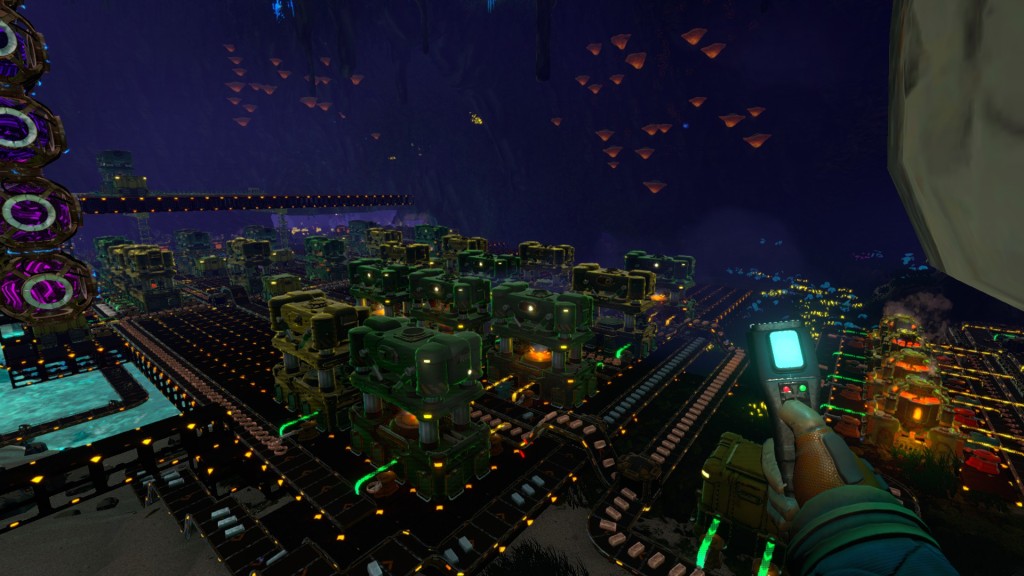Final post for a bit on this topic. I’ve talked about the mechanics and the math so far, and to a degree the limits of an early access product. The game is only in v0.3, which is two content releases from the basic portions. And in a game that is about production optimization, it is missing some key components to “make things clean”.
There are two core examples of this challenge.
First relates to constructing bases, meaning floors/walls and whatnot – not required at all but are about visual customization. There are about 30 items you can create to build a base, each of which uses a different set of material to construct. In practical terms, this means that you cannot practically automate construction of building forms and create each piece individually as you need it. This issue means that you need to haul around a lot of materials in your bag, and that if you need to experiment, you’ll end up with a bunch of crafted pieces in your bag that eventually need to be sorted out. There are two possible solutions here… building materials are split into 3 base items (concrete, steel, biomatter) and that you can “transform variants” of established pieces OR you can disassemble a piece into it’s base material to avoid inventory bloat.
Second is crafting tiers. Research tiers are a different thing, I specifically mean the two crafting tiers – Miners and Blasters. From the start, you have miners who give you basic ores, which can be refined in various stages to create every single item in the game. Eventually you unlock Blast Miners and Blast Smelters, which allow you to operate at scale – instead of 100 ores you need 1 slab, making it incredibly more space efficient. Most, but not all items allow crafting with tier 2 materials. Sadly, 3 things do not: Electric Motors, Steel Slabs, and Cooling Fans. Effectively that means that you cannot optimize those items without causing breaks in Blasting lines. The solution here is rather simple, there are missing 3 recipes and I could cut out a whole pile of spaghetti. I’m rather confident that v0.4 will have these, as v0.3 added others. I won’t rehash the Mining Charge math.. that has efficiency (and supply) issues.
This reminds me a lot of Satisfactory as the game added more content over time. Each patch had three types of changes : Quality of Life, Production Optimization, and Content. That game’s world is substantially larger, with way more than 4 node types. Satisfactory is finally going to reach v1.0, which has been a very long time coming. I still have some significant gripes with the game – that the engine is way too finicky (this is Unreal related and I honestly don’t think fixable), inventory sizes are too small (the mod is all but mandatory), transport across the world takes too long (this is dumb, put in a personal transporter), and that there are no tools to build at scale (I can’t fathom anyone playing past oil without this mod).
Techtonica is different because it’s voxel-based, meaning that the world is naturally smaller, that spaces cannot overlap, and that tools to build at scale are less important currently as the end-tier material doesn’t need 100+ miners to build 1 item. Helping Techtonica’s case is that you can automate the construction of every single object – material and stations. Dyson Sphere Program is a closer comparison in terms of tooling/structure, though that game has a significantly larger scale that Satisfactory (and infinitely better tools as a result).
Similar to DSP, I can see myself spending 10+ hours per content patch in Techtonica to rebuild the world with the new tools at hand. If I had to guess, there are at least 3 content patches to go from here.










